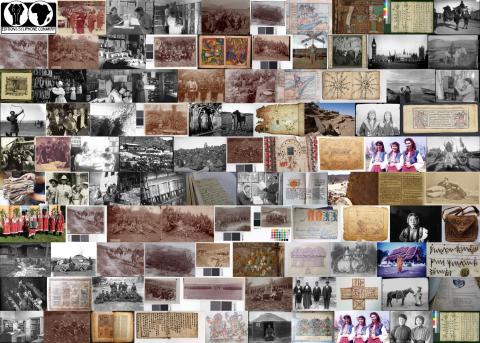Aims and objectives
This project will digitise historic and endangered ecclesiastical documents located in the Parish of Santa Cruz de Lorica in the war-torn Colombian Department of Córdoba. This region forms a bridge between the province of Cartagena and the Andean regions of Colombia and was home to historic indigenous communities, Spanish towns, and communities of escaped slaves. The ecclesiastical records from these churches date from the seventeenth to nineteenth centuries and are in danger of being lost forever due to endemic violence, neglect, hot and humid climate, and fungi, among other threats.
Spaniards invaded Córdoba in the sixteenth century, establishing towns and indigenous missions in an area that served as the breadbasket for Cartagena de Indias. African slaves from Cartagena escaped to form large maroon communities in the vast hinterland of Córdoba, which was still home to unconquered indigenous groups. Despite its significance, the region remains marginalised in Colombian and Latin America historiography. These endangered ecclesiastical documents provide unique information on racial demography, social and kin networks, and economic conditions of the region and will contribute to scholarship on Latin America, the Atlantic world, the circum-Caribbean, slavery and borderlands studies.
As in many rural churches, little attention is paid to the storage of these documents. Centuries old leather bound books are jammed into wooden bookshelves, in rooms lacking climate control. The ink has eaten through some pages, water and insect damage has left holes, and the documents are extremely fragile. An estimated 25-30% of the documents are beyond saving, but 70-75% could be digitised and preserved. Unfortunately, no Colombian institution is preserving these documents and if we do not preserve what remains, much more will be lost.
Córdoba remains one of the poorest, most violent areas in Colombia. Neither ecclesiastical nor governmental authorities have attempted to preserve local archives and the danger for the documents has become acute. Not only are these documents affected by centuries of high temperatures (average 38 ° C), humidity, the effects of fungi and the inadequate preservation by an institutional staff lacking training in archival management, but they are at the crossroads of an unfolding war. Ecclesiastical archives hold little local importance and the custodian of the parochial archive in Cienaga de Oro reported that older registers were “constantly thrown away”.
The ecclesiastical records targeted pertain to some of the oldest and most ethnically diverse areas of Colombia. Ayapel and the indigenous settlement of Tolú Viejo were settled in 1534 and 1535 respectively, and Jesuit missionaries established the indigenous settlement of Cereté in the early eighteenth century. The remaining towns were established as part of the Bourbon reforms of the mid-eighteenth century to help provision Cartagena de Indias, South America’s only legal and largest slave entrêpot. Córdoba’s new towns were located to the south of Cartagena but connected to it via the Sinú River, which also connected the towns to the Atrato River and the Pacific. African slaves from Cartagena escaped to form large maroon communities in the vast hinterland of Córdoba, adding to its historical significance. The records to be digitised include baptismal, marriage, burial, and confirmation records, religious brotherhood records, ecclesiastical administrative records and correspondence.
The already-trained team of students from the University of Cartagena, under the direction of Dr.José Polo Acuña, and his assistants, Mabel Vergel and Diana Carmona, will follow previous practice from earlier project EAP503 in digitally photographing these endangered records. Using digital cameras mounted on lightweight tripods and ancillary equipment purchased for the EAP503 grant, students will make short-term trips to the various locales and remain there to digitise materials in the local churches.
In total, the project will preserve approximately 66,800 images. The team will also create corresponding listing metadata for the images, meeting British Library standards. These images will be redundantly stored in external memory drives, DVDs, and mirrored network servers at Vanderbilt University. Copies of all materials will also be deposited at the British Library, the University of Cartagena, and in the collaborating churches in Córdoba.
Colombia is still struggling with the legacy of slavery. Approximately one-fourth of the nation has African ancestry and yet their history has been largely ignored. Recently, there is a growing interest in Colombia’s multi-racial past and the Colombian Constitution requires inclusion of Afro-Colombian history in school curricula. The documents planned to rescue will enrich the national and regional narrative by capturing a multi-racial frontier society that included enslaved and free people of African descent as well as many other ethnic groups.
Outcomes
Read online the open access article: Researching the history of slavery in Colombia and Brazil through ecclesiastical and notarial archives, published in the EAP Anniversary publication From Dust to Digital. The article can also be downloaded as a PDF (809KB).
The records copied by this project have been catalogued as:
- EAP640/1 Historical archive of Mompox, Colombia [1710-1968]
- EAP640/2 Parish Archives of San Geronimo de Monteria [1808-1948]



